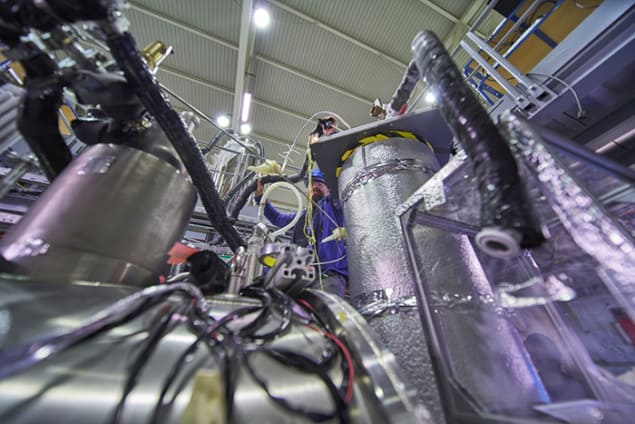
A new measurement technique used by CERN’s BASE collaboration has constrained the magnetic moment of the antiproton with parts-per-billion precision – a huge improvement over the roughly one-part-per-million precision achieved by the same team in January. The result means that the magnetic moment of the antiproton is now known even more precisely than the magnetic moment of the proton itself.
Crucial to the 350-fold improvement in precision was the simultaneous measurement of the cyclotron frequency of one antiproton and of the Larmor frequency of another antiproton. By using a “hot” particle in the cyclotron measurement, the researchers avoided the need for a time-consuming cooling step in each cycle of their experiment. This allowed the team to make measurements at a much greater rate than before, and three times faster than they managed when they measured the proton’s magnetic moment in 2014.
Equal and opposite
Discrepancies between the properties of protons and antiprotons could explain the overwhelming dominance of normal matter in the universe – something that is not explained by the Standard Model of particle physics. Anybody hoping for hints of new physics beyond the Standard Model will be disappointed, however, because the result is consistent with protons and antiprotons having magnetic moments that are opposite but equal.
The researchers expect to achieve a further improvement in precision by upgrading the experiment’s magnetic shielding and cooling system, and by using a more homogeneous magnetic field in the precision trap.
The experiment is described in Nature.



